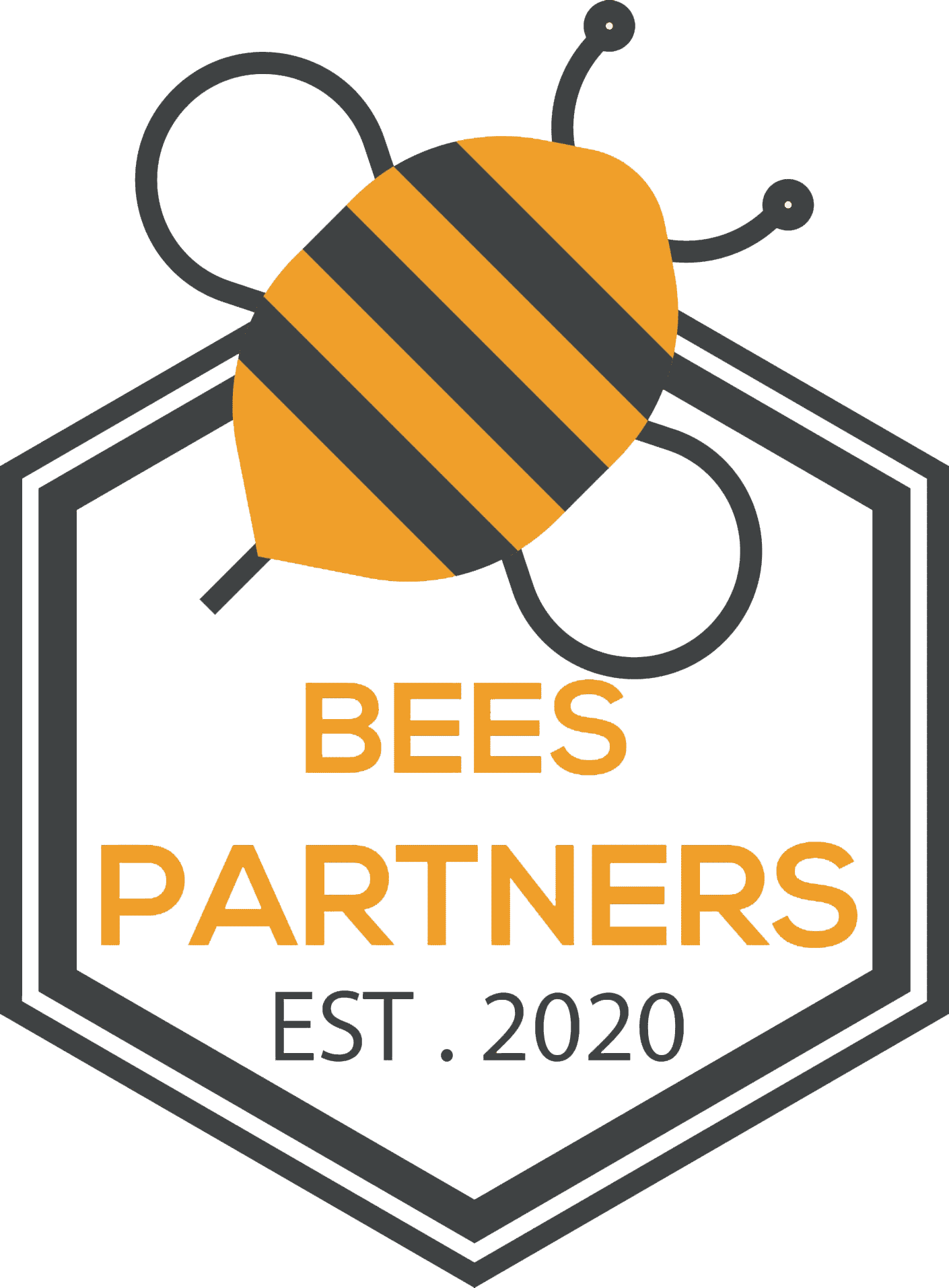Choosing a Bee Hive Starter Kit Wooden vs. Plastic Hives

Venturing into the world of beekeeping can be both exciting and daunting, especially for beginners. A bee hive starter kit serves as an essential launchpad for those eager to dive into this rewarding hobby. But what exactly does a starter kit include?
Typically, an effective bee hive starter kit consists of:
- Hive Body: This is the home for bees, including the hive stand, bottom board, frames, and covers. It’s usually made of durable wood like pine or cedar, allowing bees to thrive in a well-ventilated environment.
- Beekeeping Tools: Essential tools like hive tools, smokers, and bee brushes are included to help maintain the hive and handle bees safely.
- Protective Gear: Safeguarding oneself from stings is crucial. Kits often include suits, gloves, and veils to provide adequate protection when working with bees.
While choosing a bee hive starter kit, it’s equally important to understand the various components and their significance in ensuring a successful beekeeping experience.
Importance of Choosing Between Wooden and Plastic Hives
When it comes to selecting materials for your hive, the choice between wooden and plastic hives is vital and can impact your beekeeping journey greatly. Each option brings its own set of benefits and drawbacks.
- Wooden Hives: Traditionally, wooden hives have been favored for their natural materials and ease of repair. Many beekeepers appreciate the aesthetic charm of wooden hives, and they provide excellent insulation against weather variations. However, they have their downsides, including susceptibility to rot and the need for more maintenance.
- Plastic Hives: On the other hand, plastic hives have gained popularity due to their durability and low maintenance. They often come pre-assembled, saving time for new beekeepers. The downside is that they may take longer for bees to acclimatize to, but their longevity tends to outweigh this issue.
Choosing between wooden and plastic hives ultimately depends on your personal preferences, budget, and environmental considerations—laying the groundwork for what type of beekeeping experience you hope to achieve.

Contents
- 1 Benefits and Drawbacks of Wooden Hives
- 2 Benefits and Drawbacks of Plastic Hives
- 3 Factors to Consider When Choosing Between Wooden and Plastic Hives
- 4 Comparison of Assembly and Installation Process
- 5 Environmental Impact and Sustainability
- 6 Cost Analysis
- 7 What is the Best Beehive for a Beginner?
- 8 What is the 7/10 Rule in Beekeeping?
- 9 Are Plastic Bee Hives Any Good?
- 10 What is the Best Material for Bee Hives?
Benefits and Drawbacks of Wooden Hives
Durability and Longevity
When it comes to durability, wooden hives have been the traditional choice for beekeepers for generations. These hives are generally robust and can withstand the rigors of the beekeeping process. One of the most appealing aspects of wooden frames is their ability to be repaired. If one doesn’t mind a bit of handiwork, they can easily replace broken sections or use wood glue for minor repairs, helping to extend the lifetime of the frames.
However, one major drawback is that while they are strong, wooden hives don’t last indefinitely. Over time, wood is susceptible to issues such as rotting or warping, especially when exposed to moisture. It’s not uncommon for frames to require replacement or extensive maintenance, especially in humid conditions. Here’s a quick overview:
Pros:
- Repairable: Easy to fix if damaged.
- Natural: Creates a more natural environment for bees to thrive.
Cons:
- Maintenance Required: Needs regular upkeep to prevent rot.
- Weight: Wooden frames can be hefty, making them cumbersome during honey extraction.
Insulation and Climate Control
One of the standout features of wooden hives is their superior insulation properties. The thicker walls of wooden hives provide great thermal mass, helping to maintain a stable internal environment. This is particularly beneficial in regions with extreme temperature fluctuations, as bees are highly sensitive to temperature changes.
For instance, during hot summer days, a wooden hive can remain cooler inside, while in winter, it helps retain warmth, allowing bees to conserve energy. Here’s how the insulation quality plays out:
Benefits of Insulation:
- Temperature Regulation: Helps bees survive extreme weather conditions.
- Better Honey Production: A stable environment encourages healthy brood development and hive activity.
On the flip side, this insulation can sometimes lead to overheating if not properly ventilated during warmer months. Beekeepers should monitor the internal temperature, ensuring proper airflow to avoid heat buildup.
In summary, while wooden hives come with a few drawbacks regarding maintenance and potential weight, their durability and insulating capabilities can create a thriving environment for honeybees. Transitioning to a wooden hive allows new beekeepers to gain the charm of traditional practices while facing the challenges of modern beekeeping.

Benefits and Drawbacks of Plastic Hives
Cost-effectiveness
For many new beekeepers, one of the most pressing concerns is the initial investment. Plastic hives offer a compelling financial alternative that can often translate to greater savings down the line. While the upfront cost of plastic frames may be higher than that of wooden ones, they typically outlive their wooden counterparts, making them a wise long-term investment.
- Durability: Plastic frames are designed to withstand the rigors of extraction without warping or deteriorating, unlike wooden frames which can eventually warp or rot. This durability means reduced replacement costs for beekeepers.
- No Assembly Required: Most plastic frames arrive fully assembled, eliminating the time and effort associated with assembling wooden frames or stringing them with wire. This convenience is a significant bonus for busy beekeepers.
Moreover, for those managing multiple hives, the cost savings become even more pronounced as one can avoid frequent replacements and repairs that wooden hives require. The reduced need for maintenance and the longevity of plastic frames can make them the most cost-effective choice over time.
Maintenance and Cleaning
Plastic hives excel in terms of maintenance and cleaning, making them a popular option for beekeepers who prioritize efficiency. Their solid construction means they are less prone to damage from pests or the environment, which often spares beekeepers from tedious repair tasks.
- Easy Cleaning: Unlike wooden frames, which can absorb moisture and bacteria, plastic frames can be easily wiped down. Many beekeepers appreciate the simplicity of cleaning plastic frames at the end of honey extraction season.
- Less Risk of Contamination: Since plastic frames do not absorb liquids like honey or propolis, there’s a lower risk of contamination. This quality is especially vital for those who expect to produce high-quality honey for sale, giving peace of mind when considering food safety.
That said, while plastic frames are generally durable, they can’t be repaired if damaged, unlike their wooden counterparts, which can be patched up with a little woodworking know-how. This means that maintaining the quality of your plastic frames is critical to their longevity.
In summary, plastic hives offer significant advantages when it comes to cost-effectiveness and ease of maintenance. For newcomers to beekeeping, leaning into the benefits of plastic hives can yield a smoother operational experience—freeing up time and resources for beekeeping activities rather than hive upkeep.

Factors to Consider When Choosing Between Wooden and Plastic Hives
Climate and Weather Conditions
When deciding between wooden and plastic hives, taking into account your local climate and weather conditions is crucial. Each hive material behaves differently under various environmental stresses, and understanding these differences can enhance the well-being of your bee colony.
- Insulation: Wooden hives typically provide better insulation, making them beneficial in regions with extreme temperature variations. In colder climates, a wooden hive helps retain heat, allowing bees to maintain their body temperature during frigid winters. This insulation means that bees can conserve energy, resulting in healthier colonies.
- Humidity Resistance: On the flip side, plastic frames may be more resistant to moisture and pests, which is a significant advantage in humid environments. Wooden hives can absorb moisture, leading to mold or rot if not properly maintained. For beekeepers in tropical or rainy regions, plastic hives may be the more practical choice.
Reflecting on personal experiences, a beekeeper in a high-humidity area may find that the longevity of plastic frames far outweighs any initial investment in plastics compared to the upkeep of wooden frames that might rot or warp.
Personal Preference and Beekeeping Goals
Beyond external factors, personal preferences and your specific beekeeping goals play a substantial role in your decision-making process.
- Traditional vs. Modern: Many experienced beekeepers have a sentimental attachment to wooden hives due to their traditional nature. The craftsmanship in building or repairing wooden frames can be fulfilling. For hobbyists who enjoy DIY projects, the ability to craft wooden frames can create a personal connection to their hives.
- Convenience and Efficiency: Conversely, if your focus is on large-scale beekeeping or if you’re just getting started, plastic hives may offer the convenience you’re seeking. They are typically lighter, easier to manage, and require less maintenance, allowing you to focus more on honey production and less on hive upkeep.
Ultimately, the choice between wooden and plastic hives should reflect your philosophy on beekeeping. Whether you cherish the traditional aspects of wooden hives or value the practicality and efficiency of plastic frames, there’s a hive material to match your unique beekeeping journey. Take the time to weigh your options carefully, and choose a hive that aligns with both your personal preferences and your long-term goals for beekeeping.

Comparison of Assembly and Installation Process
Ease of Putting Together Wooden Hives
When it comes to assembling wooden hives, the process can often be a labor of love. Many seasoned beekeepers appreciate the hands-on experience, while newer beekeepers may feel overwhelmed by the assembly requirements.
- Assembly Requirements: Most wooden hive kits require some level of assembly. This could involve putting together the hive body, attaching frames, and sometimes strapping them with wire to provide support for the comb. These tasks can be time-consuming and may require specific tools.
- DIY Opportunities: For those who enjoy woodworking, customizing their hive can be very rewarding. You might find pleasure in constructing frames or boxes to your exact specifications. However, this DIY aspect can lead to inconsistencies in the frames’ fit if you’re not particularly skilled in carpentry.
I still remember my first time assembling a wooden hive. The excitement quickly turned into frustration as I struggled with the pieces, only to realize I’d forgotten to leave holes for the nails. But eventually, once everything was assembled, I felt a sense of pride in my handiwork, even if the process was a bit bumpy.
Ease of Setting up Plastic Hives
In contrast, setting up plastic hives is often a breeze. Beekeepers favor them for their convenience, especially those who are just embarking on their beekeeping adventure.
- Pre-assembled Frames: Most plastic frames come ready to use, requiring no additional assembly. This means less time spent preparing and more time dedicated to managing your bees. For instance, you can simply slide the frames into the hive body and start the process of establishing your colony.
- Lightweight and Manageable: Plastic frames are generally easier to handle than their wooden counterparts. This is particularly helpful during honey extraction or when checking on the hives. I’ve found that after a long day of inspecting hives, my arms are far less tired when using plastic frames compared to the weight of wooden ones.
- Quick Setup: For anyone new to beekeeping, the streamlined setup process of plastic hives eliminates much of the initial stress. It allows beginners to jump right into their beekeeping journey with confidence.
In summary, while wooden hives provide an opportunity for craftsmanship, the ease and convenience of plastic hives are hard to beat, especially for newcomers. Each material offers distinct experiences, so understanding the assembly and installation processes can help you make informed decisions tailored to your beekeeping needs.

Environmental Impact and Sustainability
Eco-friendliness of Wooden Hives
When it comes to sustainability, wooden hives have long been the preferred choice for many beekeepers due to their natural and renewable properties. Wood, particularly when sourced sustainably, offers several environmental benefits:
- Renewable Resource: Wood is one of the most renewable materials available. As long as responsible forestry practices are followed, trees can be harvested without depleting resources.
- Biodegradability: At the end of their life cycle, wooden hives naturally decompose, returning nutrients to the soil. This biodegradability makes wooden hives less harmful to the environment compared to non-biodegradable materials.
- Carbon Sequestration: Trees absorb carbon dioxide during their growth, meaning that wooden hives can help mitigate climate change by retaining carbon even after being converted into hive structures.
Many beekeepers cherish the aesthetic and traditional value of wooden hives. I recall the first wooden hive I worked with—there was something rewarding and tactile about handling a product of nature, knowing it was both functional and sustainable. However, it’s essential to remember that the sustainability of wooden hives largely depends on where and how the wood is sourced. Certified sustainable wood is always the best option to ensure you’re making eco-friendly choices.
Recyclability and Biodegradability of Plastic Hives
On the other hand, plastic hives bring a different set of sustainability considerations into the conversation. While they offer remarkable durability and convenience, their environmental impact requires careful examination:
- Recyclability: Many modern plastic hives are constructed from high-density polyethylene (HDPE), a material that is fully recyclable. Beekeepers can recycle old or damaged hives to minimize waste, but this requires proper disposal practices to avoid adding to plastic pollution.
- Longevity: Plastic hives outlast wooden hives significantly, with a lifespan extending often beyond a decade. This durability translates into less frequent replacements, resulting in lower overall material consumption.
However, it’s vital to be mindful of how old plastic hives are disposed of, as improper disposal can contribute to plastic pollution. I often remind my fellow beekeepers about the importance of recycling and encouraging proper disposal practices within the beekeeping community.
In conclusion, both wooden and plastic hives have environmental impacts that beekeepers should consider seriously. Wooden hives appeal due to their renewability and biodegradability, while plastic hives offer durability and recyclability. Ultimately, the choice between the two should consider individual beekeeping goals, local environmental factors, and a commitment to sustainable practices.

Cost Analysis
Initial Investment for Wooden Hives
When embarking on your beekeeping journey, the initial investment is often one of the first considerations, and wooden hives typically offer a lower upfront cost compared to their plastic counterparts.
- Affordability: Wooden hives, particularly those made from pine, are generally less expensive than plastic options. For instance, a basic wooden hive kit can cost anywhere from $150 to $300, depending on the size and included components. This affordability makes wooden hives an attractive choice, especially for novice beekeepers looking to start their journey without breaking the bank.
- Assembly Needs: However, it’s essential to factor in that many wooden hives require assembly, which can consume time and, in some cases, the additional purchase of hardware or tools. The assembly process can add hidden costs and might deter some potential beekeepers, as they might find the work involved a bit daunting.
- Durability Concerns: Moreover, while the initial cost may be low, wooden hives often have a shorter lifespan, leading to higher long-term expenses associated with repairs and replacements over time. Experiences shared by fellow beekeepers have shown that wooden frames may need to be replaced every few years due to warping, rot, or damage from pests like wax moths.
Reflecting on my own experience, my first wooden hive was a challenge to assemble, but the satisfaction of watching the bees thrive made it worthwhile. However, I did face costs down the line as I needed to replace frames and deal with regular maintenance.
Long-term Costs Associated with Plastic Hives
In contrast, while the initial price tag for plastic hives is usually higher—ranging from $200 to $400—they often prove to be a more cost-effective choice over the long run.
- Longevity: Plastic hives, made from durable materials like high-density polyethylene (HDPE), can last over a decade without significant wear and tear. This longevity decreases the frequency of replacement costs, making them a wise and reasonable investment for those managing multiple hives. Many experienced beekeepers argue that the higher initial price is offset by the reduced need for repairs and replacements.
- Maintenance Savings: Another cost-saving benefit lies in the minimal maintenance requirements. Plastic hives are typically easier to clean, requiring just a quick rinse to prepare them for reuse. This efficiency can save time and effort, translating to fewer resources spent on upkeep.
- Pest Resistance: With plastic frames being impervious to pests like wax moths, beekeepers can avoid the costs associated with treating infestations in wooden hives. The savings from pest control can be considerable over the life of the hive.
Ultimately, the initial costs of each hive type may differ significantly, but evaluating long-term costs and maintenance needs will guide beekeepers to make a financially sound decision that aligns with their goals and experience level. In my case, for managing multiple hives, I found that investing in plastic hives yielded better returns in the long-term viability of my apiary.

Summary of Pros and Cons
As we’ve explored, both wooden and plastic hives come with their unique sets of advantages and disadvantages, making the decision largely personal based on your specific needs and environment.
Wooden Hives: Pros and Cons
- Pros:
- Eco-Friendly: Made from renewable resources and biodegradable, making them a sustainable choice.
- Familiarity for Bees: Many bees adapt well to wooden frames, feeling more comfortable and secure.
- Customizable: Wooden hives can be modified and repaired easily.
- Cons:
- Maintenance: Susceptible to rot and insect damage, requiring regular upkeep and potential replacements.
- Weight: Heavier than plastic options, making them more challenging to handle, particularly when full of honey.
- Assembly Required: Many wooden hives require assembly before use, which can be daunting for beginners.
Plastic Hives: Pros and Cons
- Pros:
- Durability: Resistant to pests and rot, plastic hives can last over a decade with minimal care.
- Ease of Use: They come pre-assembled and are lighter, making inspections and handling more manageable.
- Minimal Maintenance: Easy to clean and less likely to harbor pests.
- Cons:
- Initial Cost: More expensive upfront compared to wooden hives.
- Environmental Impact: While recyclable, plastic is a non-renewable resource and could contribute to plastic pollution if not disposed of properly.
- Heat Retention: In warmer climates, they can retain heat, which may stress the bees.
Final Recommendation for Beekeepers
Ultimately, the right choice between wooden and plastic hives will depend on your landscape, budget, and beekeeping style. If you’re leaning toward a more traditional, eco-friendly approach and appreciate the aesthetic and tactile appeal of wood, wooden hives may be the way to go. On the other hand, if you seek convenience and low-maintenance solutions, especially in harsher weather conditions or for a larger number of hives, then plastic hives could enhance your beekeeping experience.
From my own observations in the field, I’ve seen beekeepers thrive using both types, and I recommend considering starting with a hybrid approach—using both wooden and plastic hives to evaluate which suits your preferences and your bees best. Lastly, do not hesitate to seek advice from experienced beekeepers in your community; their insights can be invaluable as you embark on your journey into the intricate and rewarding world of beekeeping.
What is the Best Beehive for a Beginner?
Getting started in beekeeping can feel overwhelming, especially with the sheer number of hive types available. The best beehive for a beginner typically depends on various factors including budget, available space, and the desired level of commitment. Let’s break down some of the most popular options for novice beekeepers.
Langstroth Hives
Many beekeepers start their journey with Langstroth hives, and for good reason. This traditional hive is known for its modular design, making it easier for beginners to inspect and manage their colonies.
- Ease of Use: Langstroth hives allow for straightforward inspections. You can easily add or remove frames, which helps to monitor bee health and honey production.
- Standardization: They are widely used, meaning plenty of resources, tools, and community support are available. As a new beekeeper, having access to shared knowledge can be invaluable.
- Build Space: The hive’s design encourages the bees to build upward, maximizing vertical space while minimizing the need for unnecessary horizontal expansion.
When I began beekeeping, my first Langstroth hive offered the perfect combination of user-friendliness and versatility. I found that managing my bees became less daunting as I learned how to work through the various frames.
Top Bar Hives
Another popular option among beginners is the Top Bar Hive (TBH). This hive offers a more natural approach, where bees build their own comb from top bars.
- Natural Beekeeping: Many advocates favor TBH for its simplicity and the way it aligns more closely with the bees’ natural habits.
- Back-Friendly Design: The horizontal layout means you don’t have to lift heavy supers, which can be a significant advantage for those concerned about back strain.
- Low Cost: For DIY enthusiasts, building a top bar hive can be cheaper than purchasing a full Langstroth setup.
However, as I’ve learned, managing a top bar hive can be more challenging, particularly when it comes to honey collection and swarm management.
Plastic Hives
For those wanting a low-maintenance option, plastic hives can be a great choice.
- Durability: They last longer than traditional wooden hives and don’t require as much upkeep.
- Convenience: Many plastic hives come pre-assembled and easy to fit into your hive box, which can lessen the initial setup stress.
Yet, it’s worth noting that plastic hives may not provide the same natural feel that wooden hives do, and some bees might require encouragement to accept plastic frames.
Final Thoughts
Choosing the best beehive for a beginner ultimately comes down to personal preference and lifestyle. Whether you opt for a Langstroth hive, a top bar hive, or a plastic option, the most important thing is to begin your beekeeping journey with education and passion. Each hive has its unique strengths and weaknesses, and as you gain experience, you may find yourself adapting your choice to better suit your evolving beekeeping style. So gear up, and immerse yourself in the wonderful world of bees!
What is the 7/10 Rule in Beekeeping?
As you delve into the fascinating world of beekeeping, you’ll come across various principles aimed at ensuring your bee colonies thrive. One such guideline is the “7/10 rule.” This concept serves as a great reminder for both novice and experienced beekeepers, particularly when managing hive health and production.
Understanding the 7/10 Rule
The 7/10 rule essentially refers to the ideal conditions that should be met to maintain bee productivity and well-being within the hive.
- What It Means: Of the total frames in a typical Langstroth hive, a balanced 7 out of 10 frames should be utilized for brood production, while the remaining 3 frames can be reserved for resources such as honey or pollen storage. This framework helps ensure that the colony has enough space to raise their young while still maintaining vital food stores.
- Why It Matters: Following this guideline can help prevent overcrowding, one of the common causes of swarming. By ensuring that there’s sufficient room for the queen to lay eggs while also allowing space for honey storage, you create a more stable environment in which bees can thrive.
I remember when I first learned about the 7/10 rule. I had filled my hive with a desire to create as much honey as possible but, as I soon discovered, neglecting brood frames led to a less productive colony. Once I adjusted my strategy, balancing those frames according to the 7/10 rule, I noticed healthier bees and enhanced honey production.
Implementing the 7/10 Rule
As you manage your hives, keep these tips in mind:
- Regular Inspections: During hive inspections, check the distribution of frames within your brood chambers. Make sure that at least 70% of the frames have brood and that they are working toward solid food storage in the remaining frames.
- Adjusting as Needed: If you notice an imbalance—for instance, too few brood frames or an overflow of honey—consider adding another super or expanding your brood box to give the bees more space.
- Monitor Swarming: Pay close attention to the signs of swarming, which can occur if the hive feels overcrowded. Implementing the 7/10 rule can help mitigate this risk, ensuring your bees remain productive and healthy.
Overall, the 7/10 rule in beekeeping is a simple yet powerful guideline that can lead to a flourishing apiary. By balancing brood production with necessary food storage, you can create a thriving environment for your bees. Happy beekeeping!
Are Plastic Bee Hives Any Good?
As beekeeping continues to evolve, many new beekeepers find themselves pondering the question: are plastic bee hives any good? With the rise of sustainable practices and innovative materials, plastic hives have garnered attention as a modern alternative to traditional wooden hives. Let’s dive into the benefits and potential downsides of using plastic hives in your apiary.
Benefits of Plastic Bee Hives
- Durability and Longevity: One of the standout features of plastic beehives is their remarkable durability. Made from high-density polyethylene (HDPE), these hives resist rot, pests, and extreme weather conditions. In fact, a well-maintained plastic hive can last over a decade, significantly outliving wooden counterparts.
- Ease of Maintenance: Plastic hives are designed for simplicity. They often come pre-assembled or with minimal assembly required, saving time and reducing the initial setup stress. They are also lightweight, making them easier to handle during inspections and honey extraction.
- Pest Resistance: Another significant advantage is that plastic frames are impervious to pests such as wax moths. This means fewer worries about infestations that can wreck wooden hives, allowing you to focus more on nurturing your bee colonies.
- Hygienic Environment: The smooth, non-porous surfaces of plastic hives are easier to clean. This helps maintain a sanitary habitat for your bees, reducing the risk of disease and promoting a healthy colony.
Looking back on my own experience with plastic hives, I remember feeling a mix of skepticism and hope. Initially drawn in by their convenience, I was pleasantly surprised by how easy they were to manage, especially during honey extraction.
Potential Downsides of Plastic Bee Hives
Despite their advantages, plastic hives come with a few considerations:
- Cost: The initial investment for plastic hives can be higher than that of wooden hives. While they can save money in the long run due to reduced maintenance costs, budget-conscious beginners might be put off by the upfront price.
- Heat Retention: In hotter climates, plastic hives might retain more heat compared to wooden ones. This could potentially stress bee colonies in extreme heat, so proper ventilation is crucial.
- Beekeeping Tradition: Some traditional beekeepers argue against the use of plastic, claiming that it distances the practice from its natural roots. Bees might also require some encouragement to build comb on plastic frames, which could lead to a learning curve.
In conclusion, plastic bee hives offer a modern, practical choice for beekeepers, especially those seeking durability and ease of maintenance. While there are some drawbacks to consider, the benefits can significantly enhance your beekeeping experience, particularly for beginners. Assess your specific needs and environment, and you may find that a plastic hive is the perfect fit for your beekeeping journey!
What is the Best Material for Bee Hives?
When embarking on your beekeeping journey, one of the most crucial decisions you’ll face is selecting the right material for your bee hives. Both wooden and plastic materials are popular choices, each with their advantages and drawbacks. Let’s explore the best materials for bee hives to help you make an informed decision.
Wooden Hives: Tradition Meets Functionality
Wood has been the go-to material for beekeeping for centuries, and there’s a good reason for this tradition.
- Natural Insulation: Wooden hives typically provide better insulation, keeping bee colonies warmer in winter and cooler in summer. This characteristic is especially valuable in regions with extreme temperature fluctuations.
- Biodegradability: As a natural and renewable resource, wood is biodegradable. This can be an appealing choice for environmentally conscious beekeepers.
- Familiarity for Bees: Many beekeepers believe that bees prefer wooden frames, as they can draw out comb more easily. Anecdotally, I’ve noticed that my bees settled significantly faster in my wooden hives compared to plastic ones.
- DIY Possibilities: Wooden hives can be easily custom-built or repaired, providing flexibility for hands-on beekeepers.
However, wooden hives are also subject to some downsides, such as susceptibility to rot, requiring regular maintenance, and being heavier to manage when filled with honey.
Plastic Hives: Modern Convenience
In recent years, plastic hives have surged in popularity among both novice and experienced beekeepers due to their innovative benefits.
- Durability: Made from high-density polyethylene (HDPE), plastic hives resist moisture, rot, and pests, allowing them to outlast wooden hives significantly. Many find that they require fewer replacements and repairs, saving time and effort in the long run.
- Ease of Maintenance: Plastic frames often come fully assembled and are lightweight, making them easy to handle. They can also be quickly cleaned with just water, which simplifies hive management.
- Consistency: Mass-produced plastic frames fit standard hive boxes perfectly, eliminating issues with frame inconsistencies.
However, plastic hives do present challenges, such as a higher initial cost and potential heat retention in hot climates. Some bees also take time to adjust to plastic frames, which may require a bit of encouragement.
Final Thoughts
Ultimately, the best material for bee hives depends on your specific circumstances and preferences. If you value tradition and natural products, wooden hives may be the right fit for you. On the other hand, if you prioritize durability and low maintenance, plastic hives might serve you better.
As someone who started out with wooden hives and eventually transitioned to plastic, I found that combining the two approaches worked best for me, allowing for a versatile and thriving beekeeping experience. Take the time to weigh your options and consider your local climate, budget, and specific beekeeping goals to make the best choice for your hives!
That brings us to the end of our discussion on Choosing a Bee Hive Starter Kit. I hope this article has helped clarify the benefits and drawbacks of both wooden and plastic hives, empowering you to make an informed decision based on your personal beekeeping preferences. I’d love to hear your thoughts—do you have a favorite between the two materials, or are you considering a mix for your colonies? Share your insights in the comments below, and let’s continue the conversation about creating thriving hives together! Happy beekeeping!






